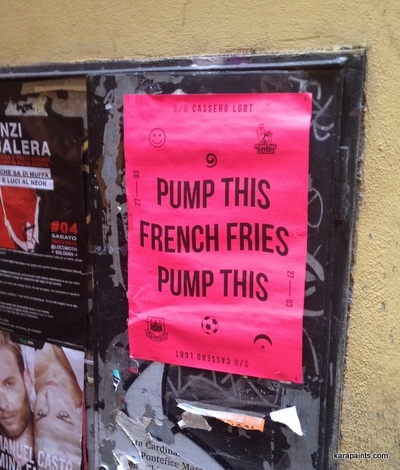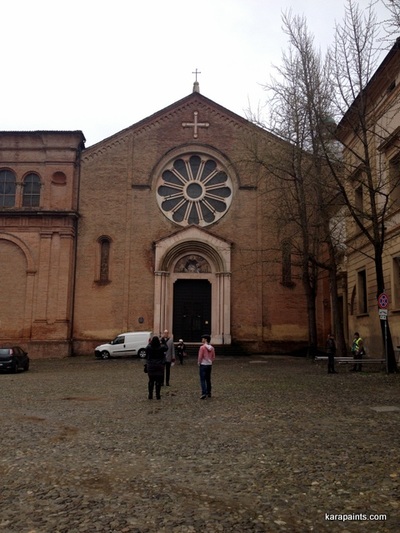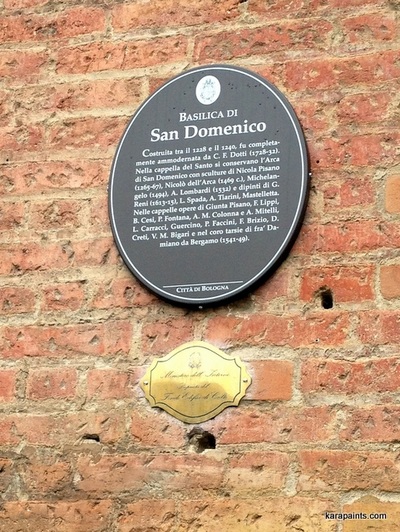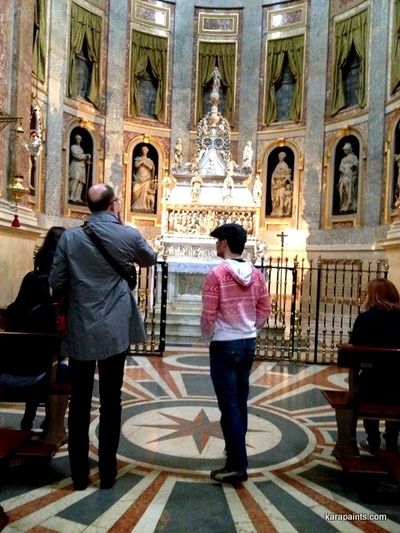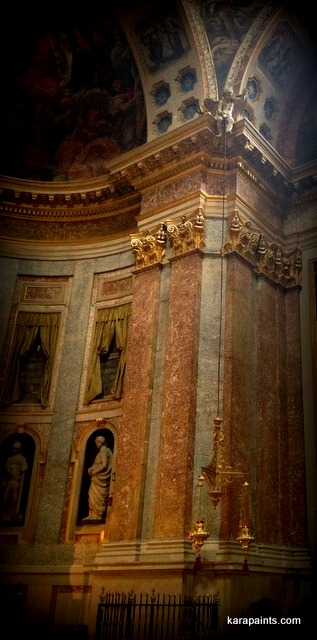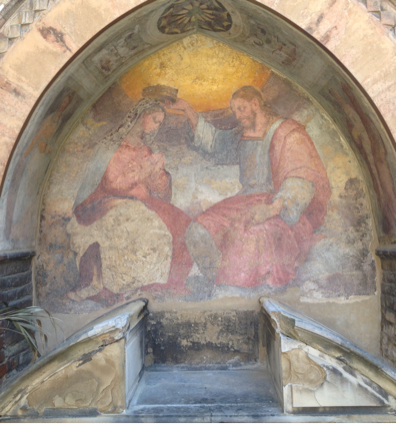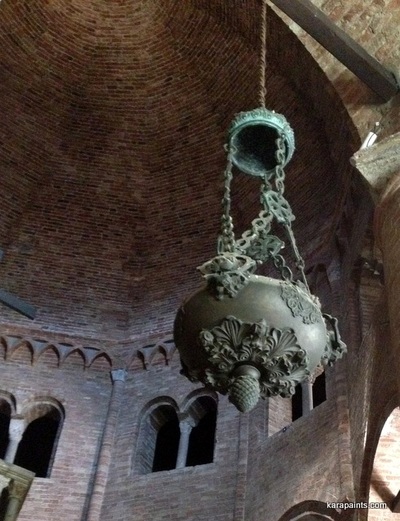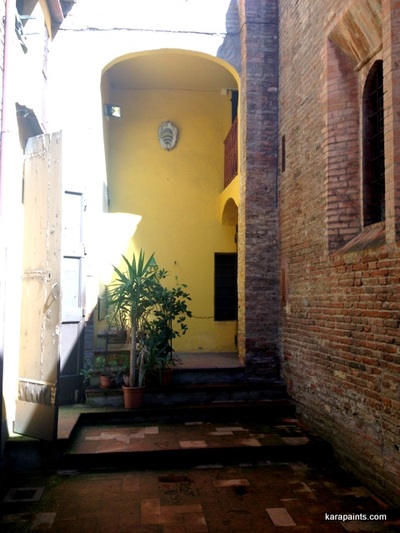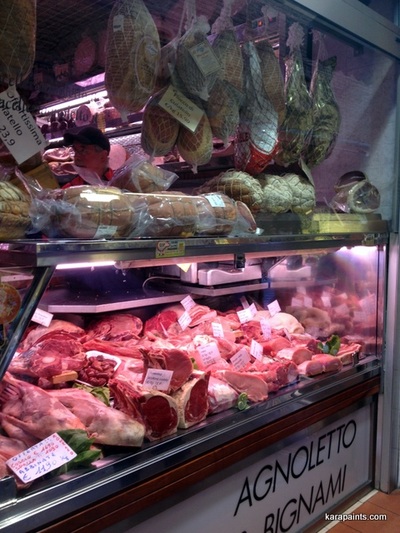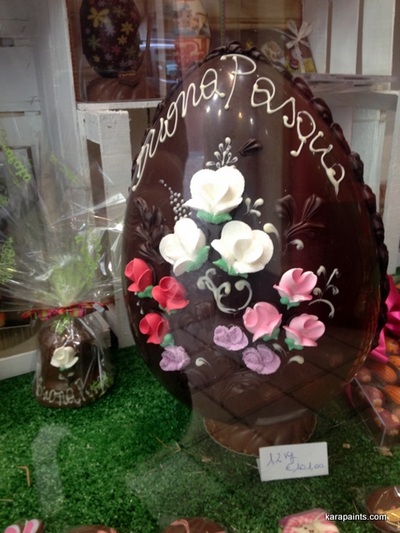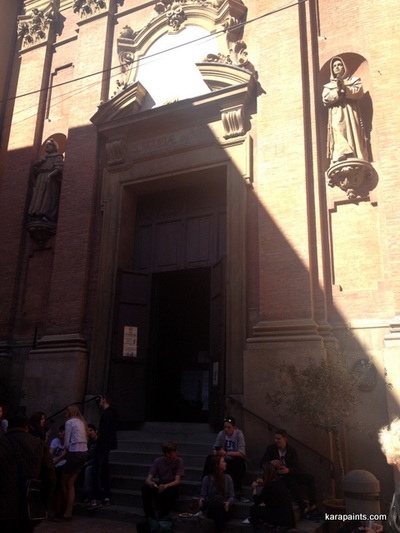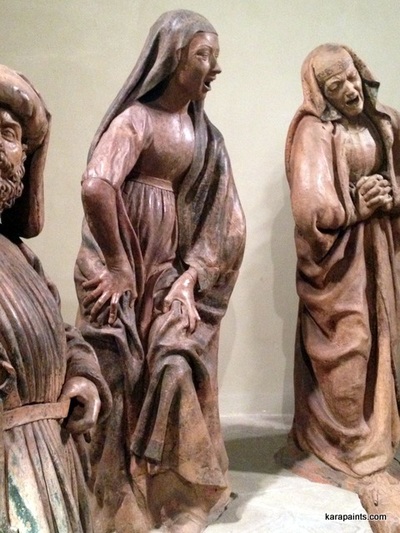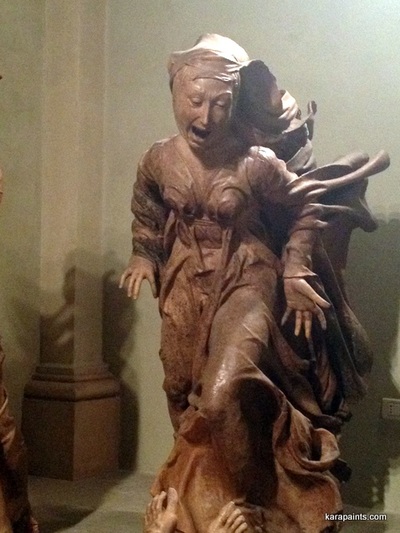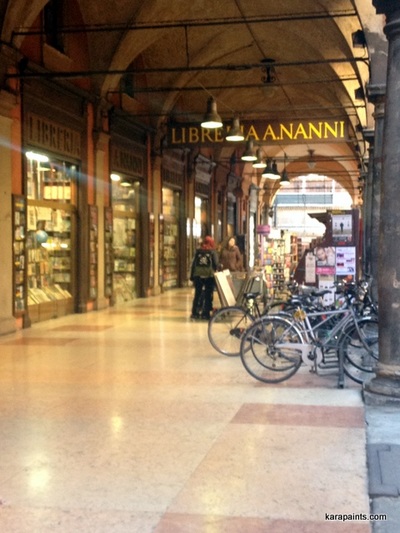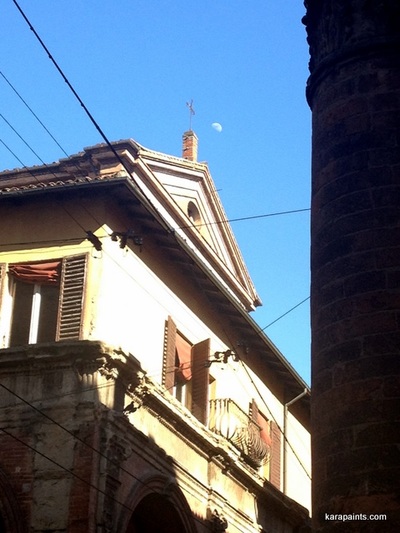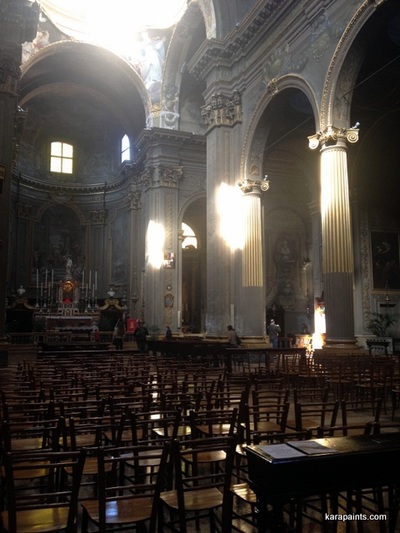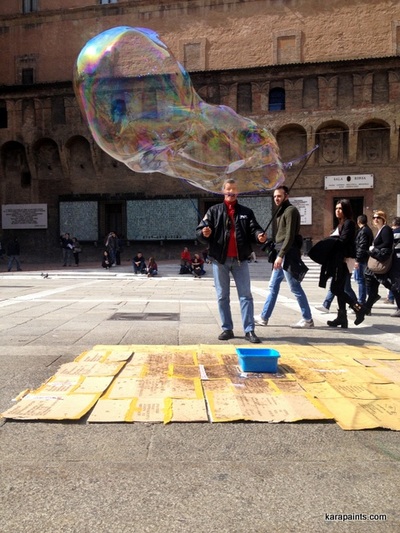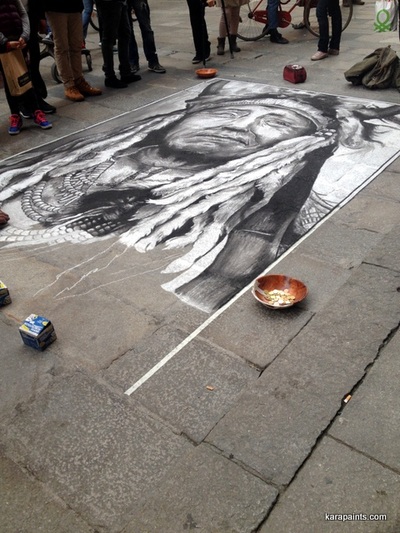Thursday, March 26
|
We landed in Bologna early in the morning. The sun was up, but the sky promised a drizzly, overcast day.
It took 3 taxis to get us to our lodgings. Traveling by cab is always an interesting way to see a city for the first time. I like it because you can just take in the scenery and not worry about traffic. As we drove towards our lodging it was like we were traveling back in time, the buildings slowly shifted from post-war concrete block apartments to older stucco covered buildings. The further we got towards the heart of the city, the more loggias (covered sidewalks) we saw. It was too early to check in and Thom had a rule that we couldn't sleep until 9pm. So we walked around Bologna. I was too tired and too delirious to remember much of what we saw--thank goodness for cameras! After 11 we checked into our rooms--no sleeping!-- and then went to lunch. And then there was more walking until 3pm, when we had our tour of the library at the University of Bologna. We were told that we couldn't take photos there, so I didn't. Nor did I have the good sense to take notes. Mostly, I remember the hand-written catalog that was stab-bound into red & black covers and stored on a wall that was probably 12 feet long by 8 feet tall. I also remember falling asleep standing up...twice. After the library, we walked down to the market street where we bought strawberries. Then we sat in the Piazza Maggiore on the steps of the cathedral and did some delirious people watching. It was graduation day at the University, so there were small packs of graduates (crowned with laurel leaves) and their friends singing and wandering the streets. I now want to wear a laurel crown instead of a mortarboard at graduation. The next few hours are fuzzy, but I know that we met in the lobby and walked to dinner. We dined at Il Tari (trattoria & pizzeria). I had pumpkin ravioli and it was delicious. At that point I was so tired, I almost fell asleep on my plate. We headed back to our lodging to get some rest for the next day's trip to Ravenna. |
Saturday, March 28
|
Saturday was a walking tour of Bologna and it's many many churches. If you have studied Renaissance & Medieval art then you know that most of the art of that time period was paid for by the Church. So where do go when you want to see the best art in town? To church!
Our first stop was the Basilica di Santo Stefano, also known as Santa Gerusalemme di Bologna, also known as Sette Chiese. The whole shebang was cobbled together over many centuries and is a delightful combination of architecture and art. The oldest part of Santo Stefano is believed to date back to 80 C.E. (and was dedicated to the Goddess Isis). You know, back when the world was flat and the Colosseum was being built. The most recent part of the church was constructed in the 13th century. As in 200 years prior to Europeans sailing to the New World. I'm not kidding you when I tell you: stuff here is old. For me, that is part of the fascination. Living in America we don't really get a lot of that. It's amazing to walk into a building that has stood for a thousand years and is still being used every day. |
After Santo Stefano, we wandered down the market street and picked up bread, mortadella (a delicious Italian ham), strawberries, and water. Then we went to the Piazza Maggiore to eat and people watch some more.
Up next was Santa Maria della Vita, a church sandwiched between two larger buildings. If you weren't looking for it, you would never notice it. In fact it was Tasha who suggested we peek inside and I am so glad she did. Inside we saw the Compianto su Christo morto by Niccolo da Puglia (also known as Niccolo dell'Arca). If you have ever wanted to feel the hair raise up on your arms from the power of art, this would be the piece to do it. I don't know how long I stared at the work before it occurred to me to take photos. The characters are slightly larger than life-sized and are on your level, so that every ounce of their raw emotion hits you square in the face. On the second floor is another piece by the same artist, but it is up 12 feet in the air. The physical space negates the emotional impact, which led to some interesting discussions about art and the relation of the work to the human size.
Then the group split into two, as some people wanted to climb the towers of Bologna. Given that the stairs are wooden and open on one side, I opted to not attempt the climb. Instead, I walked around Bologna and enjoyed seeing all there is to see on a bustling Saturday. After we regrouped, we stepped inside San Bartolomeo. It was every bit as elaborate as some of the other churches we had seen, but the grey and gold pallette kept it from feeling ostentatious.
Sunday, March 29
Sunday was a free day, so we wandered around Bologna taking pictures, eating gelatto, and marveling at the street art.
In the evening, a group of us went to the Museo Ebraico di Bologna (Hebrew Museum of Bologna), which is down a twisty street off of a piazza. The museum itself is tucked away with only a faded sign on the wall to indicate what lies behind the cast iron gate. We pushed the buzzer and the guard let us in. Thom explained we were there to see the exhibit of works by Rutu Modan, a graphic novelist and artist from Israel. The exhibit featured single illustrations that had been done for a variety of works and full pages from her graphic novel, The Property. With my very limited Italian, I was able to piece together most of the story line & guess at the rest. We had a discussion about the feelings that not being able to read brought up, and what being a struggling reader every day must feel like.
|
When we left the museum, we had to be let out of the locked gate. We got turned around in the courtyard and the guard came out and showed us the way out. He was not especially thrilled to see a large group of people come through the space, but that may have more to do with the lingering prejudice against people of the Jewish faith that still exists in Italy. Which was another topic of discussion: how one's personal identity is perceived by the society around you. And how, as librarians, we can work with individuals as individuals and not as representatives of whatever group they belong to.
|



